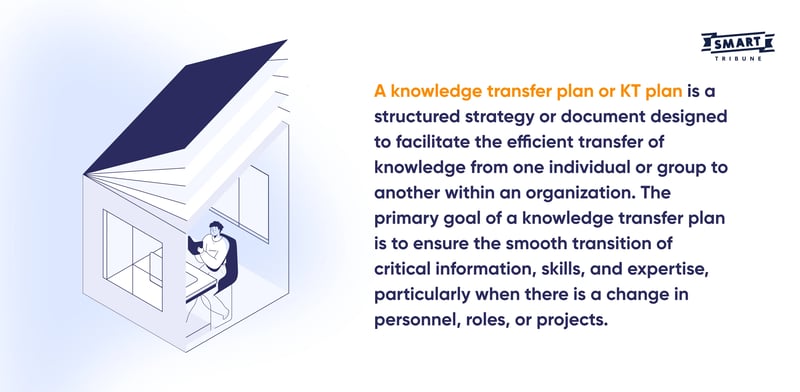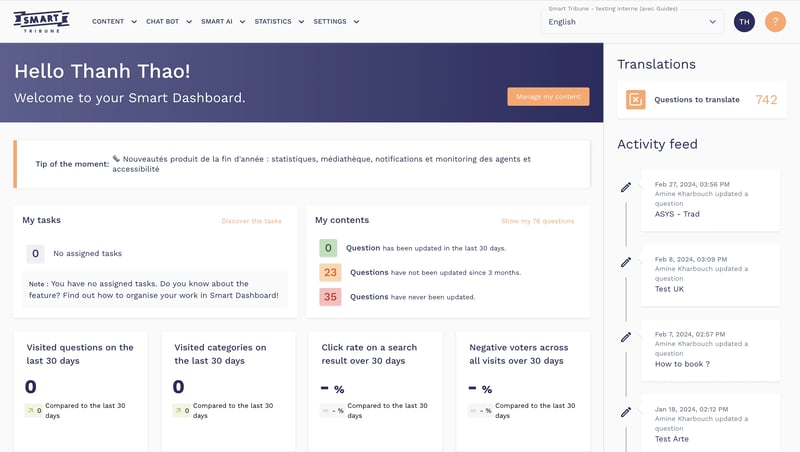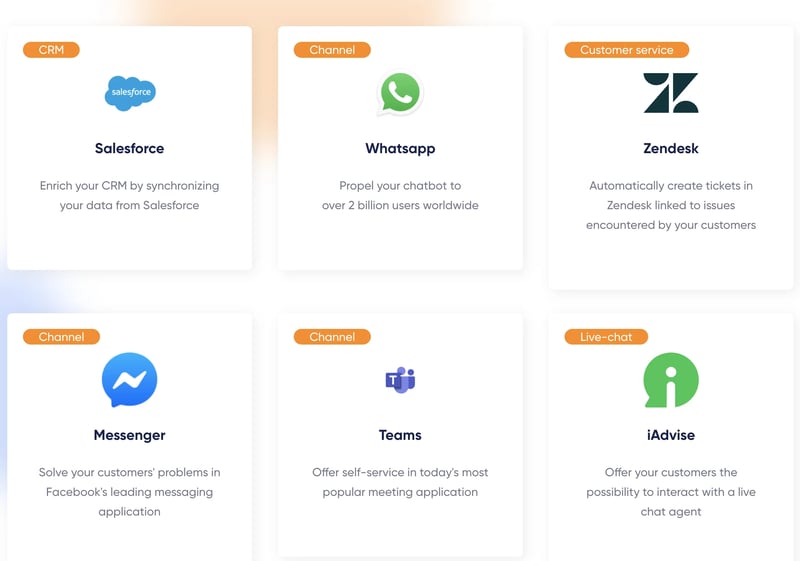
In today's fast-paced business environment, the transfer of knowledge within organizations is essential for maintaining competitiveness and fostering innovation. However, devising a structured knowledge transfer plan (KT plan) can be a daunting task. Fear not! We're here to guide you through the process with:
- Digestible definition of knowledge transfer plan,
- Everything to be in a successful KT plan,
- Steps to create a KT plan,
- Comprehensive knowledge transfer plan template - FREE DOWNLOAD,
- Importance of knowledge transfer plan,
- Frequently asked questions about transfer strategies.
Whether you're a seasoned knowledge manager or just dipping your toes into the world of knowledge transfer, this article provides fundamentals to streamline your efforts and ensure a smooth transition of knowledge.
What is a Knowledge Transfer Plan?
A knowledge transfer plan or KT plan is a structured strategy or document designed to facilitate the efficient transfer of knowledge from one individual or group to another within an organization. The primary goal of a knowledge transfer plan is to ensure the smooth transition of critical information, skills, and expertise, particularly when there is a change in personnel, roles, or projects.

Check out the integral role of knowledge transfer and its use cases in real life.
What to Include in A Knowledge Transfer Plan?
The knowledge transfer plan typically outlines:
- Key knowledge elements to be transferred,
- Methods and channels for knowledge exchange,
- Timeline for the transfer process,
- Individuals or teams involved in both transferring and receiving the knowledge.
Though the aforementioned elements are a must for a potent knowledge transfer plan, knowledge managers should also add other details to seal the knowledge gaps, avoid information silos, as well as streamline knowledge sharing and knowledge transfer in the workplace. Keep scrolling for the fundamentals of a long-term strategy and a comprehensive sample knowledge transfer plan template.
How to Create An Effective Knowledge Transfer Plan?
Before diving into the intricacies, it's vital to understand the essence of what needs to be transferred. Businesses should identify the implicit, tacit and explicit knowledge crucial for maintaining operational continuity, driving innovation, and fortifying the organization's intellectual capital.
Building an effective knowledge transfer project plan and executing it meticulously is one of the essential phases in knowledge management in the workplace. A well-crafted KT plan can sustain the growth and innovation of an organization. Let's unveil the steps.

Step 1: Identify knowledge holders
In this nascent stage, decision-makers must identify individuals or teams within the organization who possess critical knowledge, expertise, and experience relevant to the transfer objectives.
For instance, in a software development company, a senior developer with extensive experience in a specific programming language could be identified as a knowledge holder.
Step 2: Define knowledge to transfer
Next, the person in charge should clearly articulate the specific knowledge, skills, and insights that need to be transferred.
This could include
- Technical know-how,
- Best practices,
- Project insights,
- Industry trends.
In the real world, a marketing manager may need to transfer knowledge about successful campaign strategies to a newly hired marketing associate.
Step 3: Set clear objectives and goals
After determining the knowledge holders and knowledge to be stored and disseminated, you will establish concrete objectives and goals for the knowledge transfer process. Define what success looks like, whether it's seamless onboarding of new employees, improved operational efficiency, or enhanced team collaboration.
Objectives are differently defined by campaign, department, or company.
For example, while a manufacturing company may aim to reduce production downtime by 20% through effective knowledge transfer, a financial service firm may strive to strengthen risk management capabilities and ensure compliance with regulatory requirements by transferring knowledge of regulatory frameworks and compliance requirements to new hires.
Step 4: Choose effective transfer methods
Tailoring transfer methods to suit the organization's culture, resources, and the nature of the knowledge being shared is regarded as a potent strategy to drive efficiency.
There exist various options for businesses to choose from:
- Mentoring,
- Training sessions,
- Documentation,
- Job shadowing,
- or a combination of these approaches.
If you are head of a sales team, you might go for conducting weekly knowledge-sharing meetings where team members discuss successful sales strategies and techniques.
Step 5: Create a realistic timeline
Develop a realistic timeline that considers the urgency of knowledge transfer, the complexity of the information, and the availability of key stakeholders. This ensures that the transfer process remains on track and aligned with organizational objectives.
For instance, a software company may schedule weekly training sessions for new hires to gradually onboard them onto the company's software development processes.
Step 6: Allocate adequate resources
Decision-makers are supposed to ensure that necessary resources, including time, personnel, and potential budget, are allocated to support the knowledge transfer initiatives. This may involve investing in training materials, knowledge management tools, or additional staffing.
Step 7: Identify and prepare recipients
Clearly identify the individuals or teams who will be receiving the knowledge and prepare them for the transfer process.
Step 7 may also encompass:
- Outlining expectations,
- Providing access to necessary resources,
- Addressing any initial concerns or questions.
When recipients are involved from the outset, they are more likely to be engaged and committed to the knowledge transfer process. By preparing recipients and outlining expectations, organizations can foster a sense of ownership and accountability among participants.
Also, after identifying recipients, organizations can tailor the KT process to meet the specific needs and skill levels of individuals or teams. This thorough preparation ensures that the transfer of knowledge is relevant and meaningful, leading to greater learning outcomes.
Step 8: Implement diverse training programs
Design and implement a variety of training programs based on the nature of the knowledge being transferred and the learning preferences of the recipients.
Knowledge managers can prepare:
- Formal training sessions,
- Workshops,
- Online courses,
- On-the-job training opportunities.
The diversity of training programs takes center stage in maximizing the engagement of the recipients, boosting the effectiveness of the transferring process, and elevating the adaptability of the KT to changing needs and circumstances.
Step 9: Establish monitoring mechanisms
Knowledge managers should take into consideration a system to monitor the progress of knowledge transfer and evaluate its effectiveness. The system may include
- Regular check-ins,
- Progress reports,
- Feedback sessions
with both knowledge holders and recipients.
For example, a project manager may conduct quarterly reviews to assess the impact of knowledge transfer on project outcomes and team performance.
Step 10: Enable feedback loop
To continuously fill in the room for improvement of knowledge transfer plans in the workplace, knowledge managers must establish a feedback mechanism to gather insights from both knowledge holders and recipients.
Knowledge managers should encourage open communication and dialogue to address any challenges or issues that arise along the way. For example, a software development team may hold retrospective meetings after each project to discuss lessons learned and identify areas for improvement in the knowledge transfer process.
As a matter of fact, in crafting an effective knowledge transfer plan, the emphasis lies not just on the transaction of information but on the cultivation of a culture that values knowledge sharing. It's a journey that intertwines the wisdom of the experienced with the enthusiasm of the emerging, forging a path towards organizational resilience and sustained excellence.
Editable Well-crafted Knowledge Transfer Plan Template
It is commonly known that perfect execution stipulates a structured plan. That's why in this session, Smart Tribune will be arming you with a detailed knowledge transfer plan template to give you an upper hand in streamlining the transfer of expertise, insights, and best practices across your organization.
This simple yet comprehensive knowledge transfer plan template helps you navigate the process by providing answers to simple questions:
- WHAT: Skill/ task/ knowledge
- WHO: Knowledge owner, knowledge recipient
- WHY: Objectives, priority
- HOW: Resources, training methods
- WHEN: Start date, end date
- WHAT'S NEXT: Successful transfer criteria
FREE DOWNLOAD now to transfer critical knowledge with ease and ultimately maximize the efficiency of your employees.
Why Do Businesses Need A Knowledge Transfer Plan?
Doubtlessly, a knowledge transfer plan is an invaluable asset for businesses, serving as a strategic roadmap for the seamless transmission of essential knowledge, skills, and expertise within an organization. It offers the following substantial advantages:

Preserve institutional knowledge
Over time, organizations accumulate a wealth of institutional knowledge, spanning from industry insights and best practices to internal processes and lessons learned from past experiences. Without a structured approach to transfer this knowledge, organizations risk losing invaluable insights when employees retire, move on, or transition to new roles.
A knowledge transfer plan provides a systematic framework for capturing and preserving this institutional knowledge, safeguarding against loss and ensuring continuity in operations.
Foster innovation and adaptability
Innovation thrives on the foundation of shared knowledge and collaborative learning. A knowledge transfer plan facilitates the exchange of ideas, expertise, and best practices across teams and departments, fueling creativity, problem-solving, and innovation.
By fostering a culture of knowledge sharing and collaboration, organizations can adapt more quickly to changing market dynamics, seize new opportunities, and stay ahead of the competition.
Enhance employee development and engagement
Employees are the lifeblood of any organization, and their professional development is key to driving organizational success. A knowledge transfer plan offers structured opportunities for employees to learn from each other, develop new skills, and expand their knowledge base.
By investing in employee development through knowledge transfer initiatives, organizations can boost morale, engagement, and retention, creating a more empowered and motivated workforce.
Mitigate risk and ensure continuity
In today's volatile business environment, organizations face a myriad of risks, from talent attrition and succession gaps to regulatory changes and market disruptions. A knowledge transfer plan serves as a proactive risk management strategy, helping organizations identify critical knowledge gaps, train successors, and ensure continuity in key roles and functions.
By transferring knowledge from experienced employees to new hires or successors, organizations can mitigate the risks associated with workforce transitions and safeguard against disruptions in operations.
Strengthen organizational resilience
Resilience is the ability of organizations to adapt and thrive in the face of adversity. A robust knowledge transfer plan strengthens organizational resilience by building redundancy in critical knowledge areas, empowering employees to navigate challenges and capitalize on opportunities.
By institutionalizing knowledge transfer practices, organizations can weather uncertainty more effectively, pivot in response to changing circumstances, and emerge stronger and more resilient in the long run.
How Does Smart Knowledge Facilitate Knowledge Transfer in the Workplace?
Smart leaders are fully aware of the significance of a powerful knowledge management platform in running businesses. A potent centralized knowledge management software can take center stage in saving training time and expenses, encouraging employees to innovate, fostering knowledge sharing culture and so much more.
Smart Knowledge is all you need to gain the above advantages with institutional knowledge. Being the No.1 knowledge management tool in France, Smart Knowledge makes knowledge storing and knowledge transfer at the workplace a fun and seamless process by offering state-of-the-art features. Let's uncover some of these ground-breaking innovations!
Robust 360° AI ecosystem
At the heart of Smart Knowledge lies its AI-powered editor, a game-changing tool that streamlines the process of creating and managing knowledge content.
With this innovative feature, knowledge managers can generate content related to internal knowledge within seconds, saving valuable time and resources.
Meanwhile, Smart AI is a silver bullet that can automatically translate knowledge into over 50 languages on demand. This function ensures that no staff in a global firm is left behind with obsolete information.
By leveraging advanced AI algorithms, the Smart Knowledge ensures efficiency, accuracy and relevance, enabling knowledge managers to maintain up-to-date and comprehensive knowledge repositories effortlessly.
Quick access and diverse integration
Nothing is more convenient and quicker than accessing knowledge management platform via browser. "Smart Tribune" extension is designed and developed to be right at your fingertips on Chrome and Firefox. The extension enables your employees to consult procedures, business guides, call frames and tutorials directly from their workspaces, without leaving the day-to-day tools, such as CRM, ticketing tool, etc.
On other browsers, your employees still can access latest insights through the integration. Check out the list of available Smart Tribune's integrations.
Powerful reporting and analytics
Smart Knowledge goes beyond just content creation—it offers powerful reporting and analytics capabilities that empower businesses to identify and address knowledge gaps proactively.
Through diverse knowledge management metrics and customisable reports, organizations gain deep insights into knowledge usage, user engagement, and areas of improvement. Whether it's tracking the most searched topics or monitoring user feedback, Smart Knowledge equips businesses with the actionable insights they need to optimize their internal knowledge management strategies and drive continuous improvement.

Why wait any further? Book demo now!
Smart Tribune is the solution that helps businesses streamline knowledge management processes, bridge knowledge gaps, and unlock the full potential of organizational wisdom. With Smart Knowledge, the journey to effective internal knowledge management has never been smoother or more rewarding.
FAQs about Knowledge Transfer and Knowledge Management
1. What is knowledge transfer plan?
A knowledge transfer plan is a structured framework or strategy designed to systematically capture, preserve, and disseminate valuable knowledge, expertise, and insights within an organization. It outlines specific steps, processes, and mechanisms for transferring knowledge from experienced employees to new hires, successors, or other stakeholders, ensuring continuity, fostering innovation, and driving organizational success.
2. How does knowledge transfer work?
Knowledge transfer works by systematically capturing, preserving, and disseminating valuable knowledge, expertise, and insights within an organization. It involves identifying key knowledge holders, defining the knowledge to transfer, setting clear objectives, choosing effective transfer methods, allocating resources, preparing recipients, implementing diverse training programs, establishing monitoring mechanisms, and maintaining a feedback loop. Through these processes, knowledge is shared, learned, and applied, driving organizational resilience, innovation, and growth.
3. What is a KT session?
A KT session, or knowledge transfer session, is a structured meeting or session designed to facilitate the transfer of knowledge from one person or group to another within an organization. During a KT session, knowledge holders share their expertise, insights, and best practices with recipients, who may include new hires, team members, or other stakeholders. These sessions often involve presentations, discussions, hands-on activities, and Q&A sessions to ensure effective knowledge transfer and understanding.
4. What types of knowledge to transfer?
Types of knowledge to transfer include explicit knowledge - documented and codified information, implicit knowledge - expertise and insights gained through experience and difficult to articulate, tacit knowledge - intangible knowledge deeply ingrained in individuals, difficult to express and transfer.
5. What makes a good knowledge transfer plan?
A good knowledge transfer plan includes clear objectives, identifies key knowledge holders, outlines transfer methods, allocates resources, prepares recipients, establishes monitoring mechanisms, and maintains a feedback loop to ensure effectiveness and continuity.
Bottom Lines
A well-executed knowledge transfer plan is not just a luxury but a strategic imperative for organizations aiming to thrive in today's competitive landscape. By systematically capturing, preserving, and disseminating valuable knowledge, organizations can ensure continuity, foster innovation, and drive success. From identifying key knowledge holders to leveraging technology and tools like Smart Tribune's knowledge management platform, every step of the knowledge transfer journey is vital.
Hope that after reading this article, you are ready to build your knowledge transfer plan with the involvement of an influential knowledge management software. Should you have any further inquiries related to knowledge transfer plan, drop us a line for assistance.




.png)



